Christian Holstad‘s emblem of a marketplace of crushed hopes and dreams….
The Road to Hell is Paved (Whole Foods and Target)
2009
Installation View: vintage millenery tubing, vinyl, reflective fabric, lame, tubing
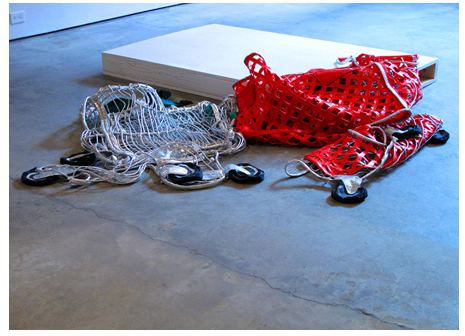 reminds me of an earlier series.
reminds me of an earlier series.
Cris Bruch 93 Pieces
1988
Hammered shopping cart
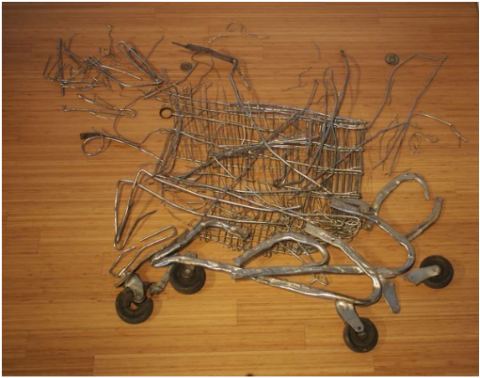 Next to Holstad’s silky fabrications, Bruch’s 93 Pieces is raw evidence of the poverty, bad luck, mental illness, alcoholism and outcast eccentricity that collided with the Reagan administration to produce the homelessness we now take for granted.
Next to Holstad’s silky fabrications, Bruch’s 93 Pieces is raw evidence of the poverty, bad luck, mental illness, alcoholism and outcast eccentricity that collided with the Reagan administration to produce the homelessness we now take for granted.
In his shaggy youth in the 1980s, dressed as a cook, Bruch liked to boil onions to barter or give away on a fantastically overladen shopping cart.
Street Activity, Vegetable Currency
1987
Photodocumentary
Photo: Savak
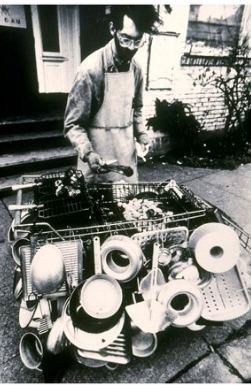 Roller Roaster
Roller Roaster
1987
Shopping cart and found objects
39 x 60 x 36 inches
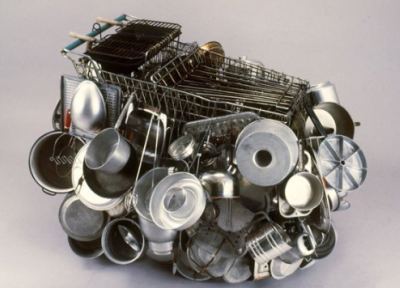 Bruch’s Attention Shoppers (1985) is sealed with burnished steel. Shake it and it
Bruch’s Attention Shoppers (1985) is sealed with burnished steel. Shake it and it
rattles with an impressively deep gong. It’s a shopping cart that’s a dead end, a container that shuns contents, a
tomb of consumer desire.
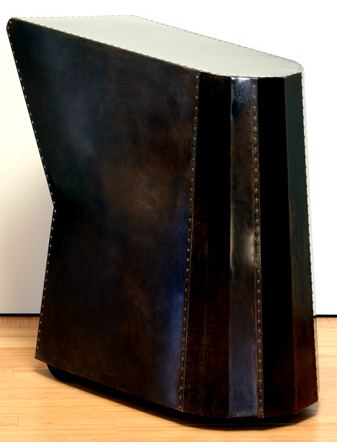 The artist moved on without changing the core of who he is, a formalist with a tragic view of the world.
The artist moved on without changing the core of who he is, a formalist with a tragic view of the world.
Don’t Feed It from 1993 (Richard Nicol photo) is a Constructivist city that belongs to the future, long after we’re gone and buildings have begun to become transparent.
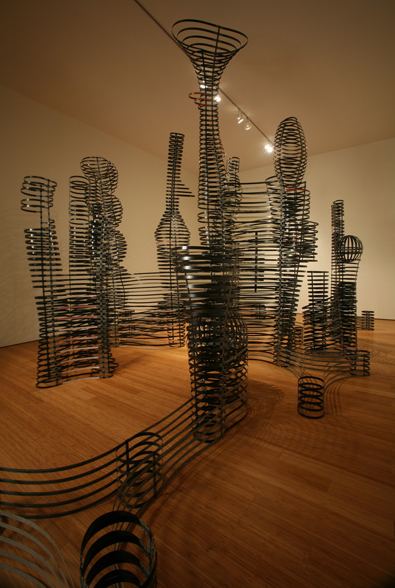 With light streaming under garbage lids, How Did I Get Here? from 2001 features sentences spit out through what look like bullet holes, humor and grace mastering the rage of a living in a spiritual war zone.
With light streaming under garbage lids, How Did I Get Here? from 2001 features sentences spit out through what look like bullet holes, humor and grace mastering the rage of a living in a spiritual war zone.
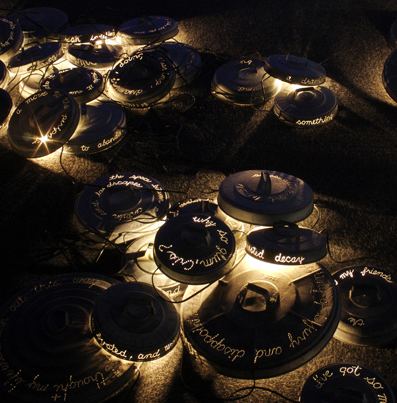 The thin, scalloped sheets of aluminum he used for Mutterhulse (2007) are typical of ones found wrapping fast food drive-bys, offices on used car lots, churches for the video Christ in strip malls that are here today, gone tomorrow. The piece a tribute to his German mother, once a musician but reduced in later life to sitting in a chair staring out the window, unsure of her own identity. Hunkered down around itself, it features a spiral-shaped top, a place for energy to go after it leaves the shell of the body.
The thin, scalloped sheets of aluminum he used for Mutterhulse (2007) are typical of ones found wrapping fast food drive-bys, offices on used car lots, churches for the video Christ in strip malls that are here today, gone tomorrow. The piece a tribute to his German mother, once a musician but reduced in later life to sitting in a chair staring out the window, unsure of her own identity. Hunkered down around itself, it features a spiral-shaped top, a place for energy to go after it leaves the shell of the body.
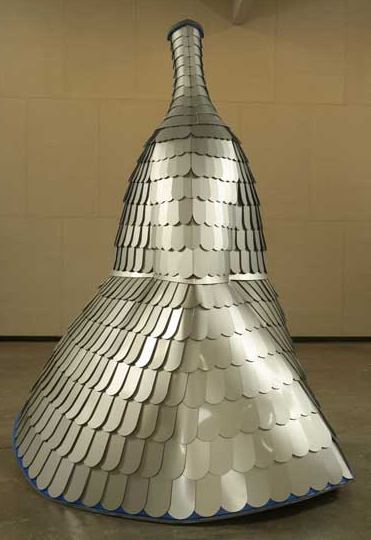 Pattern reveals the beauty of the physical world. Roofscape, 2008, mahogany plywood, paper tape, 48 x 33 x 16″
Pattern reveals the beauty of the physical world. Roofscape, 2008, mahogany plywood, paper tape, 48 x 33 x 16″
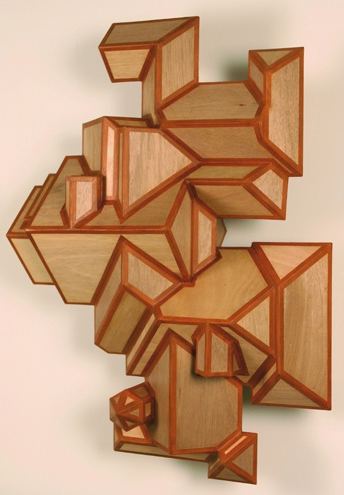 Represented in Seattle by Lawrimore Project.
Represented in Seattle by Lawrimore Project.



Leave a Reply